Designers, researchers, PhD students, anthropologists and practitioners of various disciplines gathered for the Material Desires workshop, to do design led explorations of the home/work divide. The event, which took place at Goldsmiths was led by PhD researcher Paulina Yurman, from the design department, and was sponsored by the EPSRC’s Balance Network.
During the morning session, we carried out design led activities to help use explore and identify themes to do with organising our roles to do with work and home or family life.
Geographies: By discussing the various identities we manage on a regular basis, we created a geography of our daily juggling. Our badges displayed some of these identities and we used them as a starting point to stimulate discussions about how we separate or integrate our various roles.
We concentrated on little incidents of daily life, or hints and observations of the particularity of each situation. Linking them with geographical terms helped stimulate free associations. For example, ‘valley of owed favours’ and ‘island of procrastination’ were loose terms for islands on the map that described the emotional landscape and helped us open a space from which to explore throughout the day.
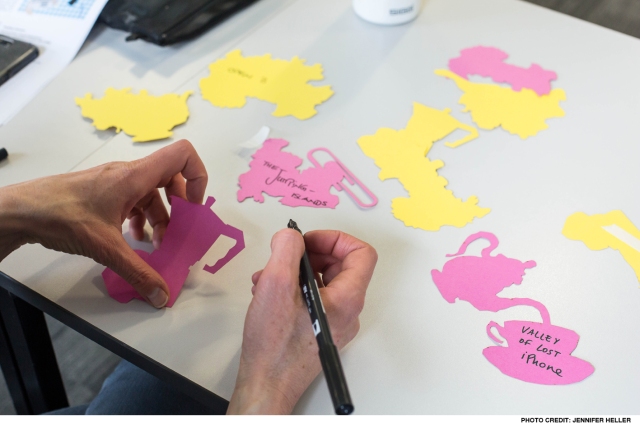
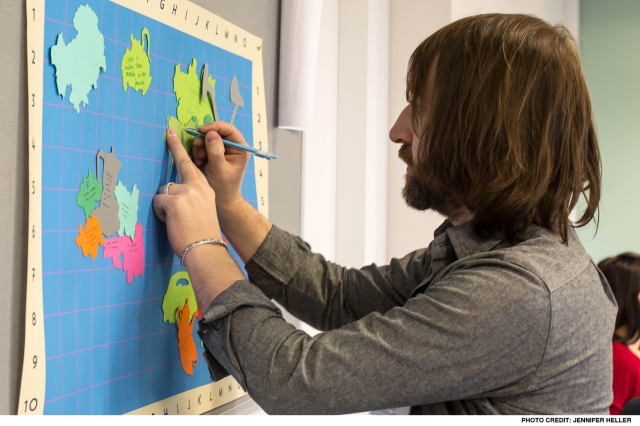
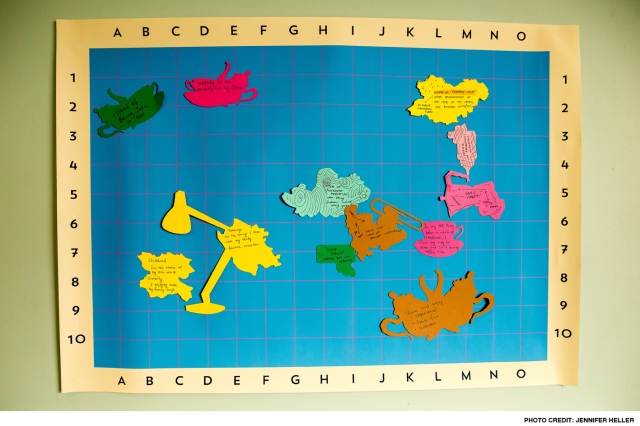
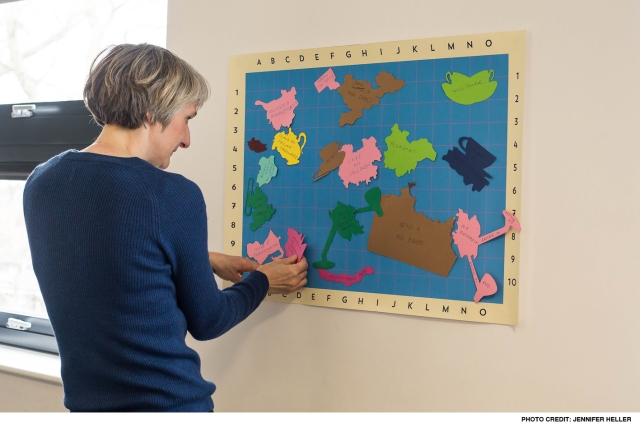

Identity Discs: Participants were given two semi-transparent coloured acrylic discs, one with the word work, another with the word home. When placed on top of each other, the discs created a new colour. Each participant was asked to visualise how separate or intersected their work self and their home self are, and to describe what the intersection means. A third disc, in another colour and without any word could be used to represent other identities that were neither work nor home related. Participants were asked to reflect on how this might differ from how they think their partners or other family members would present the discs.
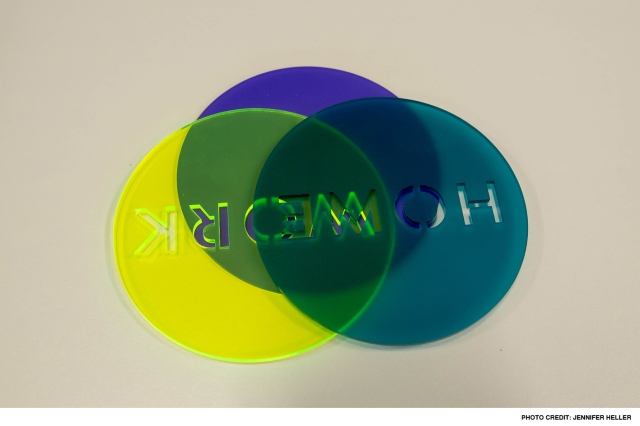
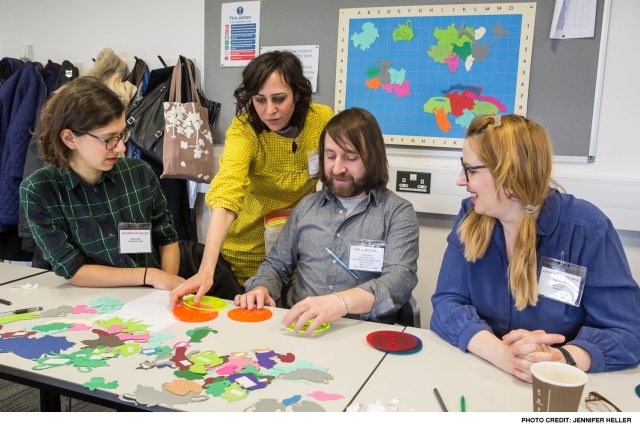 One discussion revolved around how children can have an effect in how we separate or integrate work and home life. For some, not talking about home and family life at work was an important decision in protecting their professional identity. To a participant, it came as a surprise when another who is a father, reported a need to limit the information shared at work about home life (when, for example, having to leave work to look after a child). Another father preferred to come clean and be open about his arrival and leaving hours to care for his child. Two participants who are mothers felt a strong need to protect their work identities by not disclosing much information about home life at work, but described how they do talk much about their work lives to those at home. In contrast, another participant, who is not a parent but has responsibilities as a beekeeper, related how this caring role is important in her being able to put strong boundaries and separate home life from work life, much needed to maintain a healthy balance. For her, having to leave work on time to care for her bees was not problematic and felt she could voice the reason for leaving openly.
One discussion revolved around how children can have an effect in how we separate or integrate work and home life. For some, not talking about home and family life at work was an important decision in protecting their professional identity. To a participant, it came as a surprise when another who is a father, reported a need to limit the information shared at work about home life (when, for example, having to leave work to look after a child). Another father preferred to come clean and be open about his arrival and leaving hours to care for his child. Two participants who are mothers felt a strong need to protect their work identities by not disclosing much information about home life at work, but described how they do talk much about their work lives to those at home. In contrast, another participant, who is not a parent but has responsibilities as a beekeeper, related how this caring role is important in her being able to put strong boundaries and separate home life from work life, much needed to maintain a healthy balance. For her, having to leave work on time to care for her bees was not problematic and felt she could voice the reason for leaving openly.
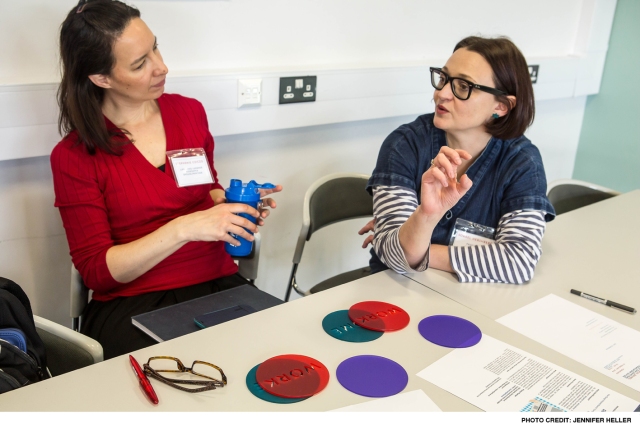
Quick Proposals: In the afternoon session we created quick proposals using everyday objects and lo-fi materials, in response to some of the themes that emerged during the earlier sessions, leading later to group discussions. The objects were used to inspire participants to think about the meaning certain objects have in our identities and the uses we assign to them in our daily management of roles. We used them in many unexpected ways, often not their intended uses.

props included lo fi materials as well as some everyday objects like teacups, dog bowls, stationary, baby bottles, picture frames, etc.
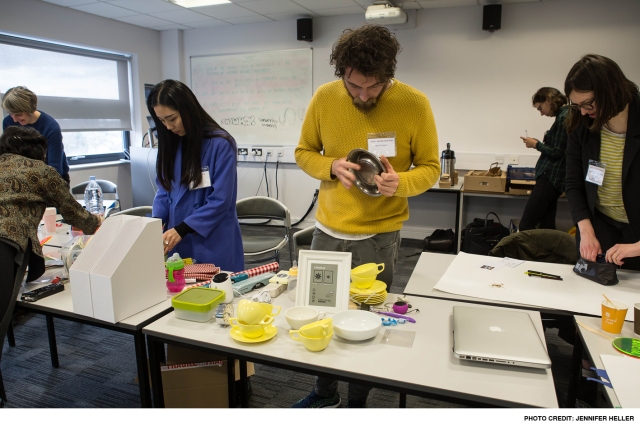
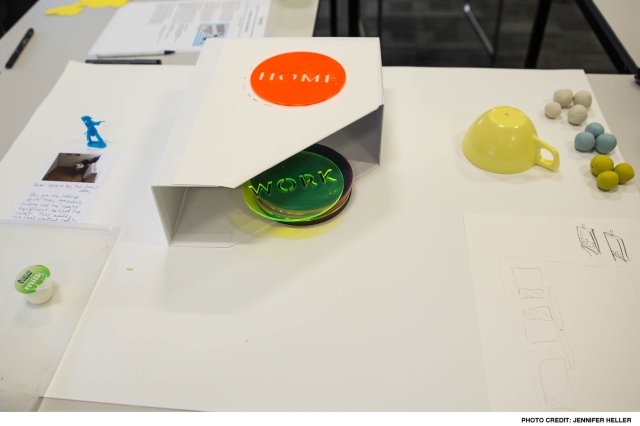
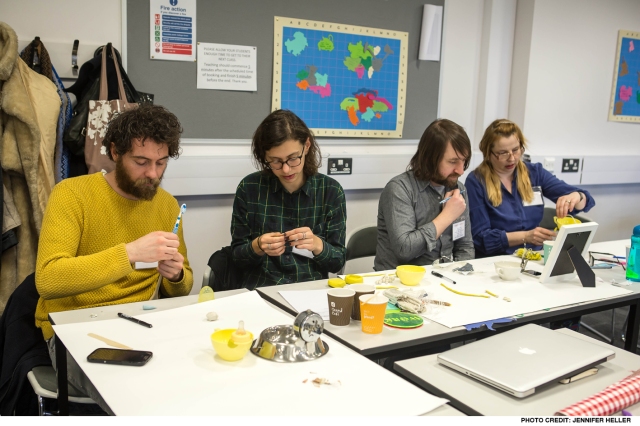
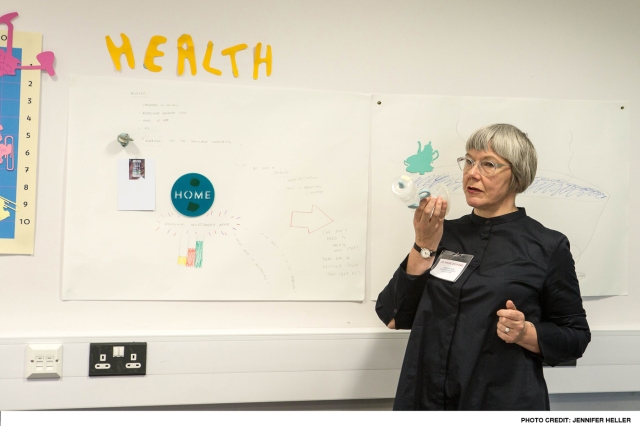 The impact of setting work related boundaries on health came up in discussions a few times.
The impact of setting work related boundaries on health came up in discussions a few times.


Katarina Dimitrijevic’s proposal Everyday entanglement: Home/ Work / Spiritual practice relations included spiritual practice as an important element in the juggling of identities.
Her model has various sections each respresenting a different element. Foundation base (saucer) as the home representing family (partner /child /pets/plants); the middle (plug) section stands for work relations (education/academic research/ practice) and the top section (cup) is the spiritual practice, everyday being (body/mind/soul). The twisted cable represents the entanglement of everyday conditioning that entwines and involves with all.
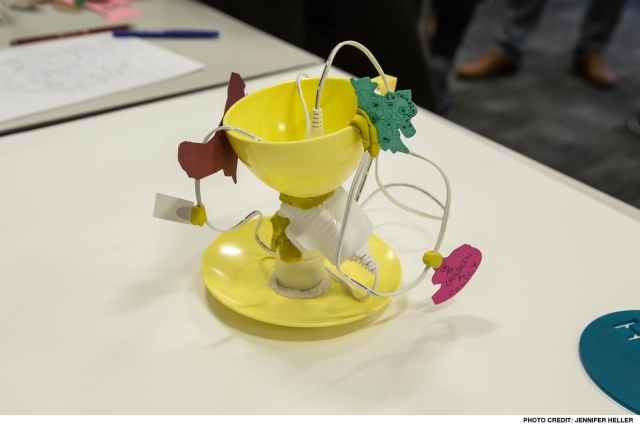
Katarina Dimitrijevic’s Everyday entanglement: Home/Work/Spiritual practice relations.
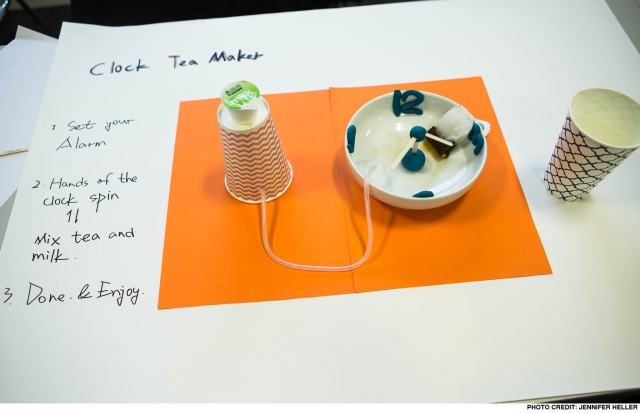
Huishan Ma’s Clock Tea Maker
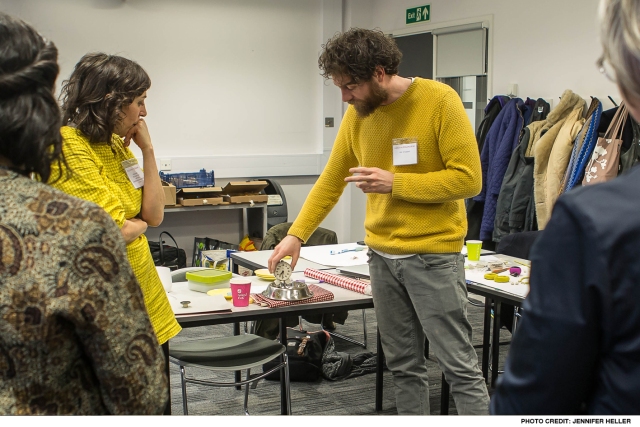
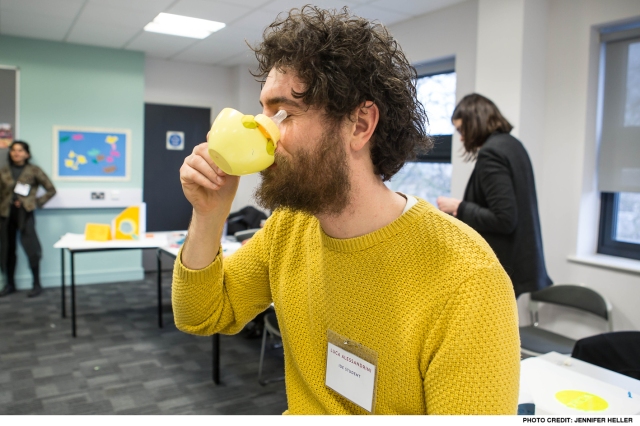
Luca Alessandrini’s Guilt Teacup
Luca Alessandrini’s Guilt Teacup with a protruding object (a baby bottle’s teat) that taps on the eye when drinking, alludes to parents’ possible guilt when sustaining themselves. Guilt was an interesting topic during the concluding discussions, particularly for those who had a caring role outside work, leading to the question if guilt is gendered (do fathers and mothers feel guilty in different ways when attending to identities that are not parental?)


